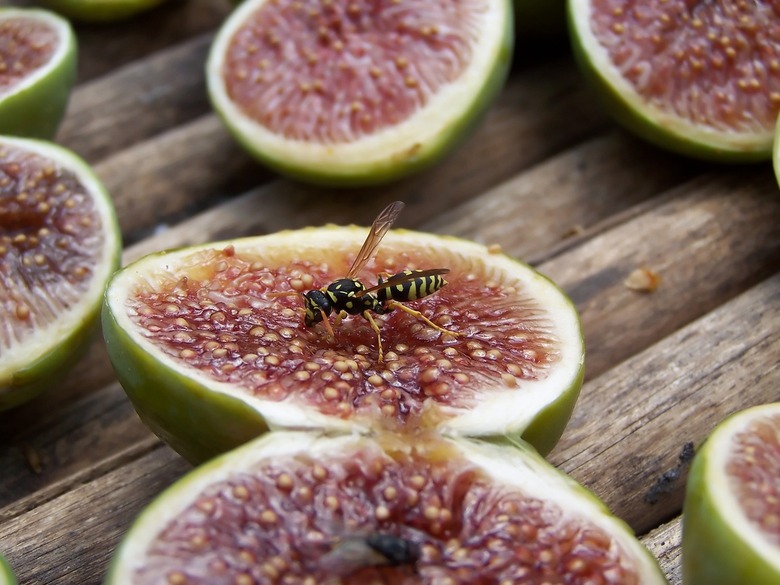Figs Are Not Vegan Because They Are Full Of Dead Wasps
That's right, hold on to your horses; figs are not in fact the vegan fruit you thought they were! This fancy fruit has been depicted in a mythical light for thousands of years, from Adam and Eve clad in fig leaves in the Garden of Eden to Buddha achieving enlightenment under the Bodhi tree, a large and sacred fig tree.
More recently, figs are being heralded for their naturally sweet flesh and their abundant calcium and potassium. They're often used by healthy eaters as a sugar substitute, and they're delicious in a multitude of recipes.
But botanically speaking, a fig is actually more of an inverted flower than a fruit. These flowers bloom inside the unripe fig-shaped "fruit," which later ripens into the fruit that we enjoy so thoroughly. Because of their backwards, inside-out nature, figs cannot rely on normal methods, like wind or bees, for pollination.
Enter the fig wasp. This wasp and the fig tree have great understanding, a mutualistic relationship that both benefit from, though seemingly a little more at the expense of the female wasp. (Even in nature, females cannot get a break!)
The deal is this: The fig gets pollinated and the darling little wasp gets to lay her eggs inside the fruit, but for a price. As the female wasp crawls into the fig, her antennae and wings break off — mother's sacrifice, don'tcha know. Crawling up the small passage within the fig is this mother wasp's final journey, for there she will die. In a fascinating twist, the fig ends up using an enzyme known as ficin to break down the wasp's body into protein. Once the baby wasps are born, the males (often born without wings) chew a way out before fertilizing the newly born female wasps. The females then emerge from the fig, ready to spread the pollen from their fig, to another fig tree by repeating the same cycle, assisting in the reproduction of the fig tree and laying their own eggs in the process.
You will be relieved to know that the wasps aim to lay their eggs in the male figs, while the figs we eat are female. But occasionally a female wasp will accidentally crawl into a female fig, where, due to a lack of space, she is unable to lay her eggs — though she dies, just the same, alone in a fig, with no antennae or wings. She's just a fig wasp, stuck in a fig, unable to escape.
So there you have it. Are you shocked to your core? Are you vowing to never eat a fig again? Don't worry, many of the figs sold and bought in the U.S. are from California, where a large majority of the fig trees are actually self-pollinating. How's that for an anti-climax?
